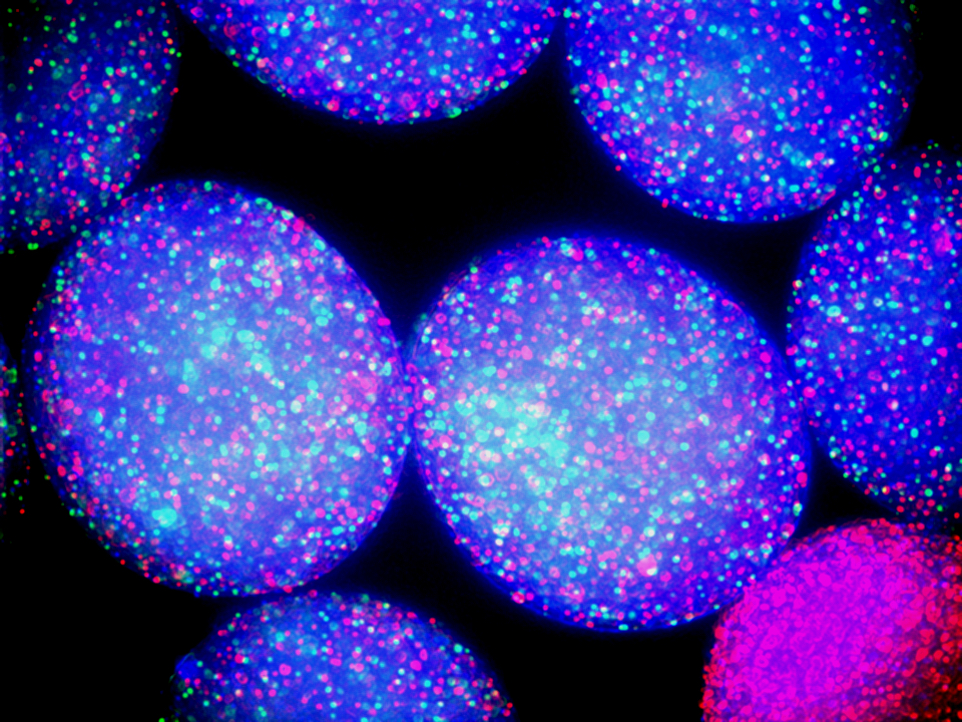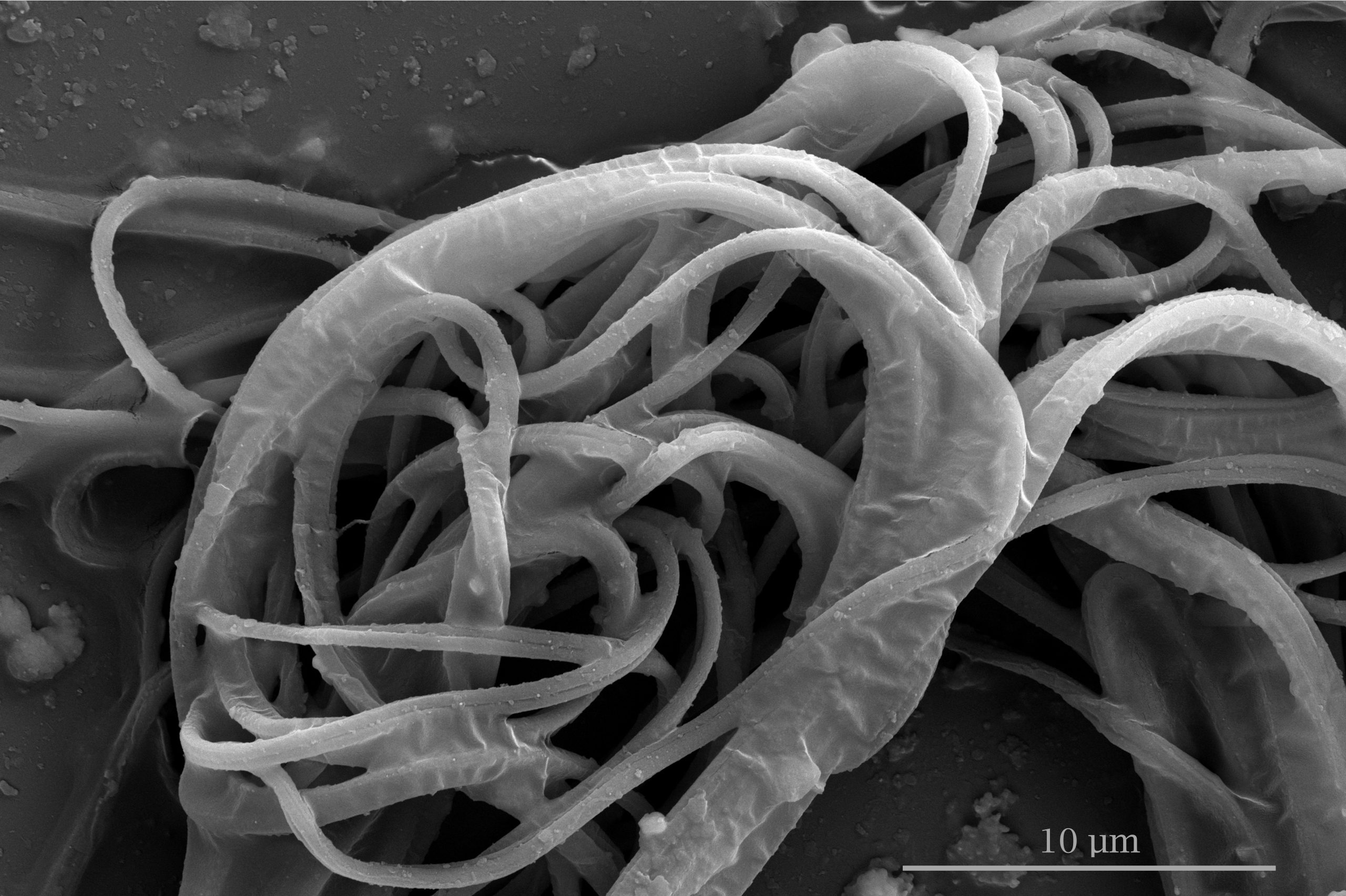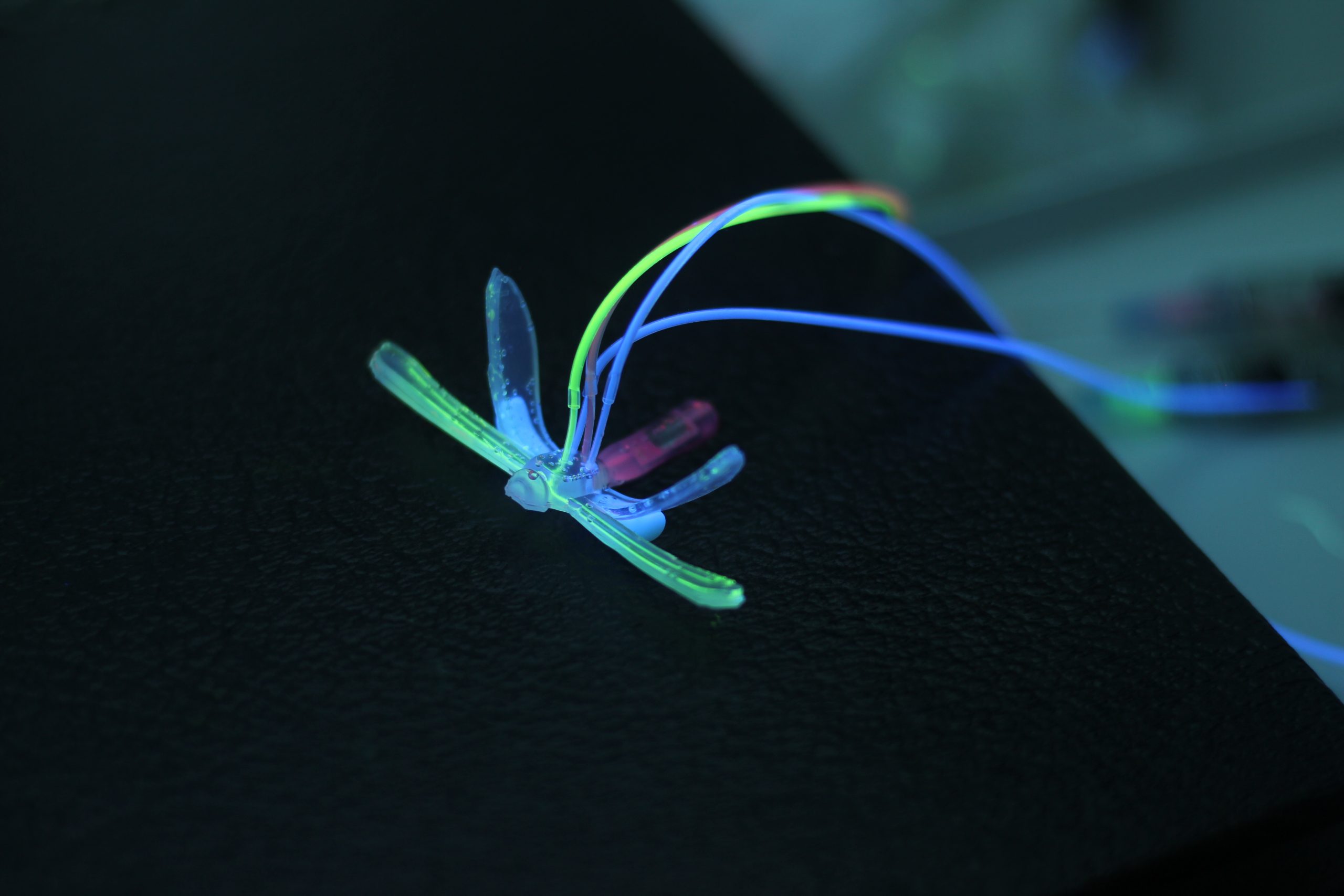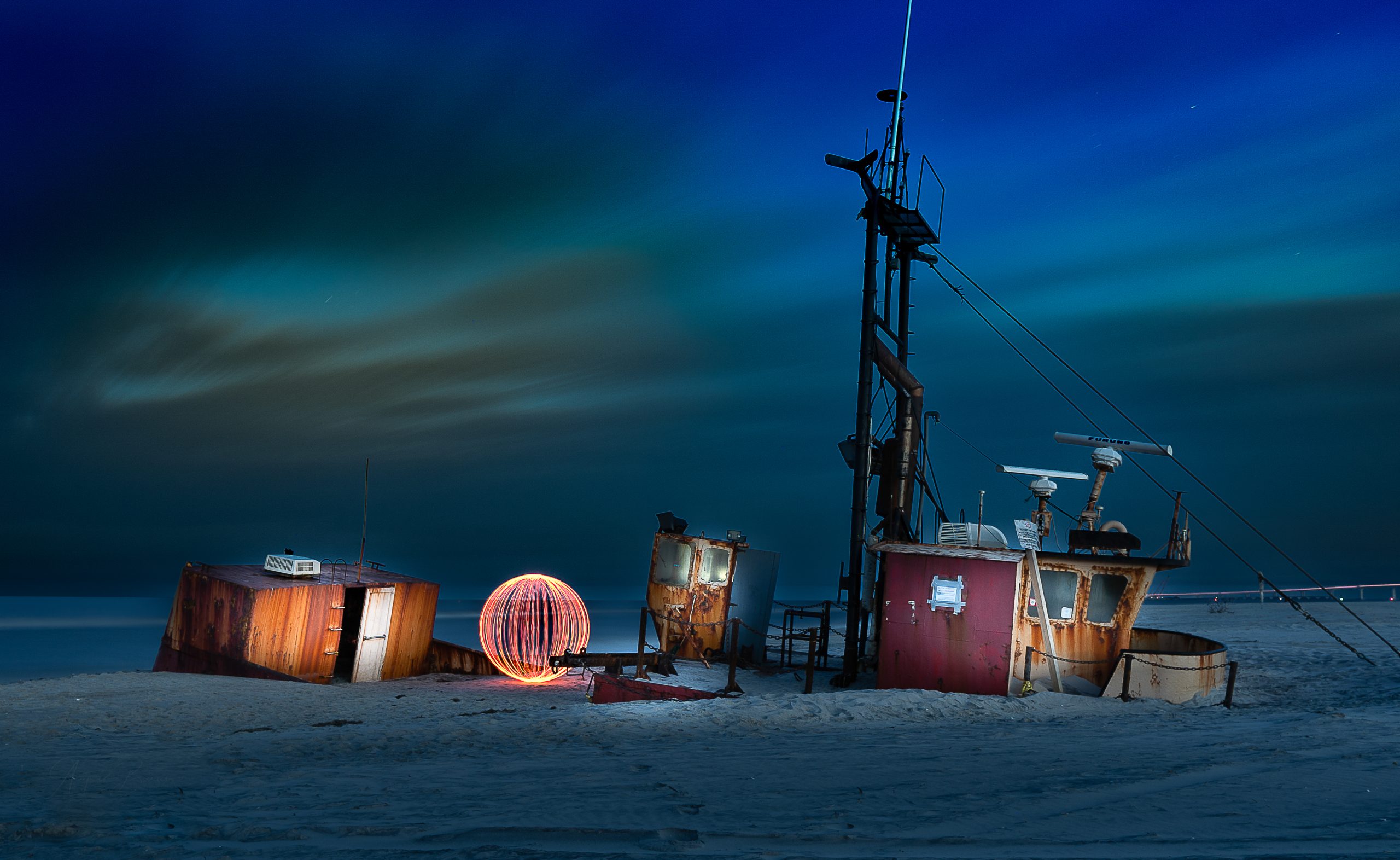Congratulations to the winners of the 2022 Envisioning the Invisible photo contest!
Judges’ Choice:
The Watcher, by Nathan Rayens, Department of Mechanical Engineering and Materials Science.

Our cells are packed with a plethora of fantastically complex organelles, so it is perhaps unsurprising that intermediate filaments, which provide the cell with support and organization, do not often claim the spotlight. My research is partially focused on seeing how these irregular, meandering structures may influence intracellular transport, the directed movement of cargo throughout the cell. Generally, my favorite days in lab are those during which I get to peer into the unfathomably tiny. Recently though, when I looked through the microscope, I felt like I was being watched back.
Bacterial Easter Eggs, by Zach Holmes, Yuanchi Ha, and Andrea Weiss, Department of Biomedical Engineering

No, these dazzling spheres are not easter eggs or hidden gems, they are bacterial communities! To visually display how distinct bacterial species can coexist, engineers in the You lab trapped bacteria in hydrogel capsules and cultured them overnight in growth media. These species express colored proteins, and we captured their glow using a fluorescence microscope. These capsules are one way to spatially control bacterial growth, and this technology could be used to support research involving bacterial communities like chemical production, biocomputing, and engineered living materials!
SEM Image of a “Solar Vine,“ by Michael Valerino, Department of Civil and Environmental Engineering

On the harsh surface of a solar panel where temperatures regularly exceed 140 degrees F – life still thrives. This filamentous fungus grew and reproduced in less than 3 weeks in the hot India sun. This hearty organism has been shown to permanently damage the glass panel surface, leading to losses in efficiency. Regular brushing with water is the only way to prevent a thick film of growth. Coating the organic material in gold allowed for a crisp SEM image, the twisted shapes of which remind me of a vine strangling a tree.
Audience Choice:
DraBot, by Vardhman Kumar, Department of Biomedical Engineering

The image shows a soft robotic dragonfly, DraBot, that is powered by fluid pressure via microchannels embedded within its body.
Losing Our Way and Finding the Light, by August Burns, Fitzpatrick Institute for Photonics

Our North Carolina Outer Banks is well known as “Graveyard of the Atlantic” for its many shipwrecks. Due to the shifting waters and many storms, the channels change and are invisible to our human eye. Even the most experienced fishermen have lost their way in the channels. This fishing vessel, “Oceans Pursuit,” looks like an ancient ghostship, though it ran ashore in March 2020. As many lost their way in the pandemic, I turned to light painting photography. In this image, you will find a Golden Orb created within the ship. This single image was created by spinning a ball of light in a full circle for over a minute. With long exposures, we can move light in the dark to create beautiful art such as these orbs and we are completely invisible in the photo.
Envisioning the Invisible is the Engineering Graduate Student Council’s annual photo submission contest showcasing the unseen beauty of research performed by members of the Pratt School of Engineering community. More information can be found at the Envisioning the Invisible site.
